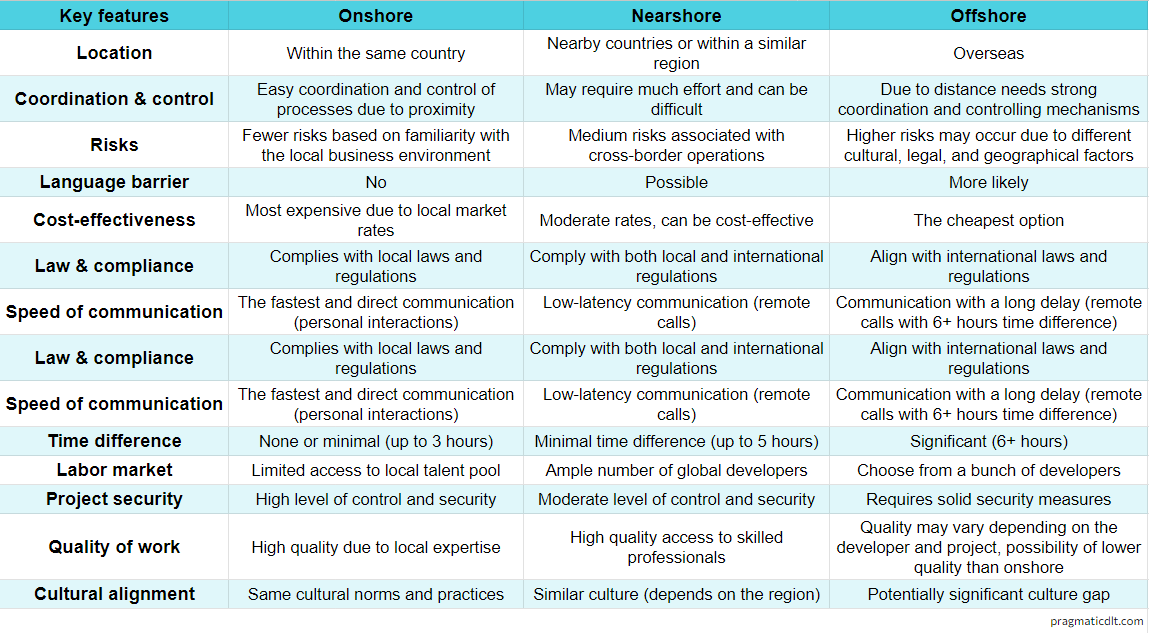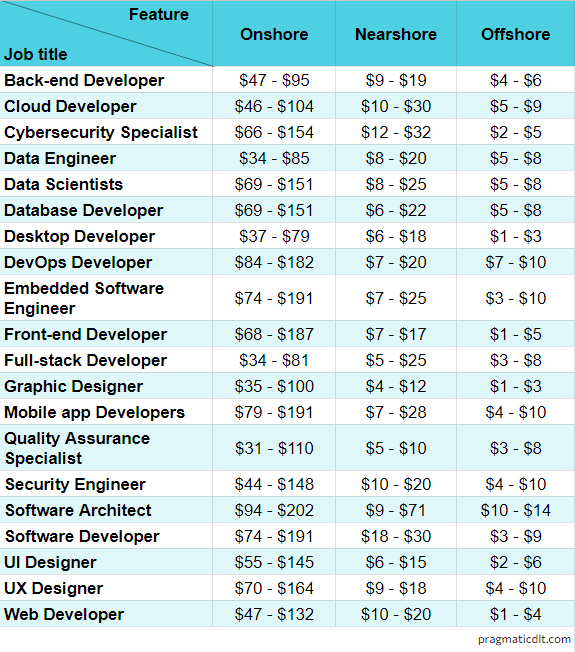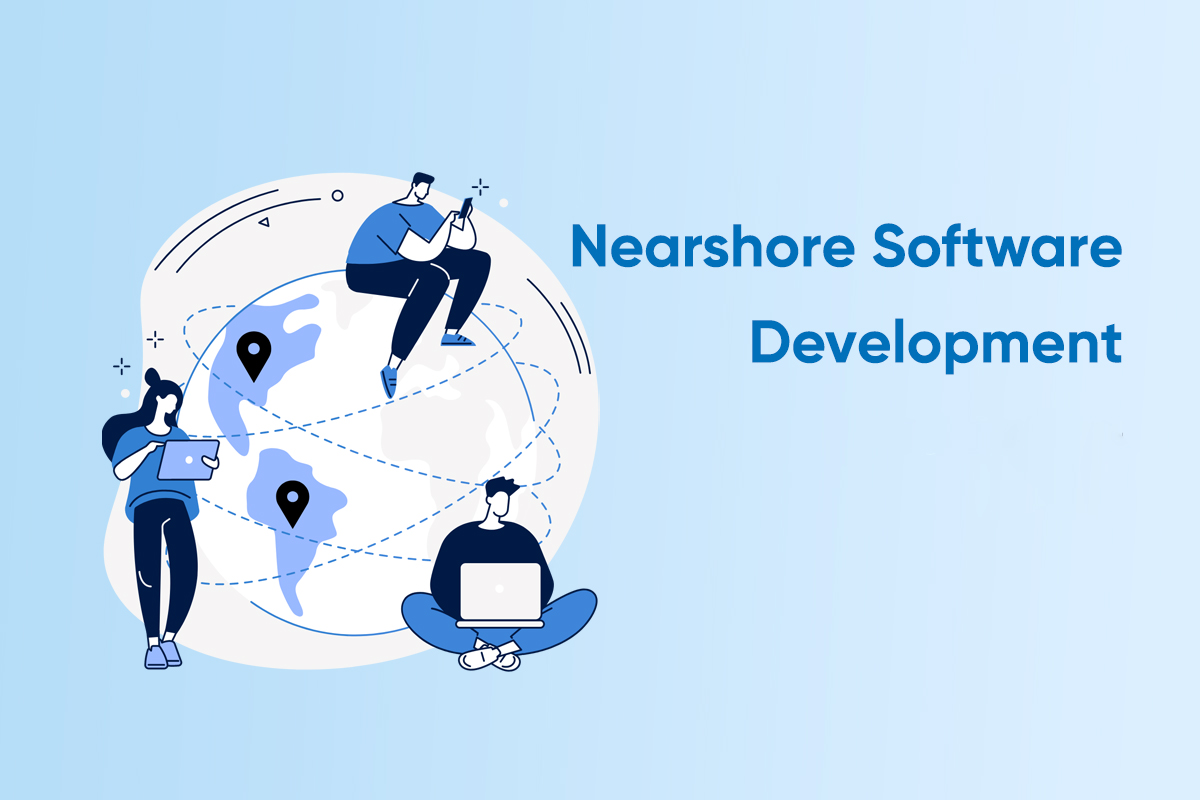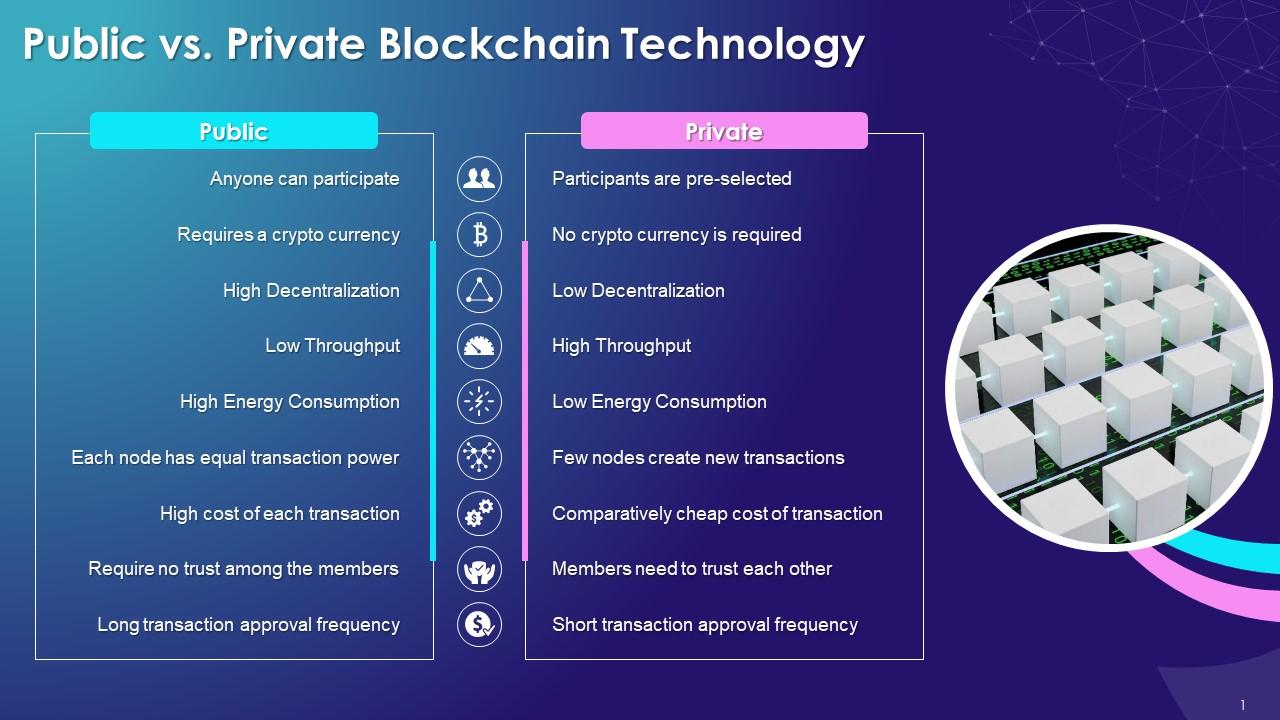As your business grows, you’re confronted with a pivotal choice: expand your team internally or leverage outsourcing? The goal is clear – to streamline operations and maintain cost-effectiveness. However, the decision between nearshore and offshore outsourcing can be complex.
In this article, we will explore several key areas:
- The essence of nearshore software development services and their distinction from alternative outsourcing models.
- The ideal candidates for nearshore outsourcing and the reasons behind its appeal.
- Potential challenges associated with nearshore outsourcing and strategies to navigate these hurdles.
- Guidelines for selecting and engaging with a nearshore software development provider.
- Determining which outsourcing option will drive your business towards success.
By concluding this discussion, you will possess a more profound understanding of nearshore outsourcing, its unique benefits and challenges compared to other models, and insights into managing it effectively to ascertain if it aligns with your business objectives.
Let’s start from the basics: What is nearshore software development outsourcing?
Nearshore software development services, or as it is also called nearshore outsourcing, means passing on your software development tasks to companies or freelancers in nearby countries or those that are based within a similar time zone. This approach provides businesses with cost-effective solutions without the need for in-house teams, availing you of international talents sometimes distinguished from the locals only by significantly lower rate.
Why should you consider nearshore outsourcing?
Nearshore software outsourcing benefits companies of all sizes, financial resources, and strategic goals. This model can be a cost-effective option for startups that lack the resources to build up in-house development teams. Additionally, it ensures smooth collaboration, communication, and knowledge sharing between development teams, all in line with corporate objectives. Enables startups to expand their operational reach, gain a competitive advantage, and focus on core business priorities.
In a nutshell, it is suitable for all companies who want a talented workforce but wish to avoid paying the high costs associated with maintaining in-house developers.
Although nearshore software development may not be the optimal choice for every company, it is best suited for projects such as B2B, B2C, and SaaS solutions, the companies that prefer real-time collaboration but not in-person; those who use Agile methodology in their companies; new software development processes, and those who develop a specific product (like an app) on a one-time basis.
What is the difference between nearshore and offshore outsourcing?
- Onshore (aka domestic) outsourcing involves shifting software development tasks to companies or teams within the same country as your company is located (e. g. from New York state to Texas, etc.). This approach ensures proximity, easy communication, better collaboration and faster project completion;
- Nearshore outsourcing operates your software development or other tasks regionally or nearby, fostering collaboration with minimal time difference (e. g. from the US to Mexico or Colombia):
- Offshore outsourcing means hiring teams from distant countries with different time zones, which is the most cost-effective way. However, it poses communication and decision-making challenges. If you focus on the end result you can hire an offshore software development team with a similar mindset and values to your local employees (e. g., from the US to Ukraine).
Onshore vs nearshore vs offshore
Let’s compare onshore, nearshore, and offshore outsourcing models to help you decide which model best suits your business needs:

All three outsourcing models offer tangible benefits. However, as you see, both onshore and nearshore are equally effective in their functionality. On the other hand, the offshore model has several disadvantages, such as the risk of data leakage, inadequate and delayed communication, and risks in work quality. Therefore, the nearshore outsourcing model is a smart move for companies that aim to increase their flexibility, get more from your money, and provide more benefits than the offshore outsourcing model.
But hold on, there are more pros to choosing nearshore software development services:
- Global skills accessibility is the primary advantage of nearshore software development. This allows access to a broader pool of international talent, including top experts in the chosen region, without being limited by the knowledge of your current team or local experts;
- Cost-effectiveness: Basically, you can pay lower hourly or monthly salaries to the nearshore team compared to the onshore team. This allows you to save money on overheads and other business operations;
- Increased competitiveness by leveraging the expertise of a nearshore software development team, companies can quickly adapt to market changes, implement new technologies, and deliver innovative solutions to their product;
- Geographical and time zone alignment allows smooth communication with minimal time constraints (up to 4 hours), which means fewer delays in communication and the ability to have calls almost anytime;
Cons of nearshore software development outsourcing
Despite the impressive number of benefits you get by choosing this model, there are some disadvantages, for example:
- Factors such as frequent travel, lack of visibility into work, high management oversight, and turnover disruptions can add hidden costs that offset hourly rate savings;
- Requires periodic coordination and controlling of work processes, as it is easier to do with an onshore team simply because you can come and check the status of work directly. With a nearshore team, you can only monitor remotely and rely on their integrity and responsibility;
- Related to the second point, the time difference can lead to communication delays and lack of synchronization; that’s why both parties should try to avoid this problem.
What countries are considered nearshore?
If your company is located in the US and you choose the nearshore software development services, you can use those teams or freelancers that are based in: Canada, Mexico, Costa Rica, Brazil, Argentina, Chile, Peru and Colombia.
For Europe, nearshore options are Eastern European countries like Poland, Ukraine, Romania, Hungary, and Bulgaria.
Several nearshore destinations that provide software development services have gained popularity among US businesses:
- Mexico: firstly, because it is located in the neighborhood of the United States; secondly, known for its rich, highly skilled talent pool in technical spheres and has cultural solid compatibility.
- Brazil: as the largest and most populated country in Latin America, it has an immersive number of IT specialists. Its favorable time zone and location make it an attractive nearshore country for companies in the United States.
- Colombia: With a vibrant tech ecosystem of educational institutions that support the software development industry, the country provides brilliant tech experts.
- Argentina: the software development industry is well-established and mainly focused on exporting to foreign markets, especially in the US. It boasts numerous tech companies with a solid reputation, employing highly skilled and well-educated software developers.
You might also like
business
business-intelligence
Focusing on providing helpful, transparent advice and high-quality Blockchain solutions to the clients in different geographies facilitates Pragmatic DLT as the top Blockchain solutions provider in Canada at GoodFirms. View the Pragmatic DLT’s GoodFirms’ profile to get the insights of the company and its way of crafting and catering solutions to global clients. About Pragmatic DLT Rich […]

How to choose a nearshore software development partner?
- Before you start your search, you must identify your specific goals. Rather than simply stating, “I need an app, can you do it?” Instead, you need to take the first step by providing your nearshore team with as much detail as possible from the get-go. For instance, outline that you want an app tailored for builders with specifics: define the app’s purpose (solving a problem/addressing specific needs, etc.) → delve into your potential target audience (who will use the app?) → and describe the desired functionality and features you envision for the future app.
- Set a budget for your project – after brainstorming what you want and what you expect in the end, you are ready to develop a budget for the project. You can choose a fixed-fee or hourly pricing model based on the type of services you need. Knowing your budget will help you select potential candidates without wasting time.
- Establish your expectations. You must clearly set what you want to get. It is not only about technical requirements that you define at the beginning but also some soft skills, like communication, flexibility, self-management, etc., you need to conduct them before starting to search for candidates perfectly suited for you.
- Start your search: For this purpose, you can use platforms like Clutch, Upwork, referrals, and even Google.
- Clutch.co:
It is a leader for finding and providing B2B services. Where you can even create a project brief with ClutchAI and plug SmartMatch for a narrowed list of options and filter your candidate by location, service line, industry, your project budget, other client reviews, hourly rates, etc. Plus, with the Shortlist option, you can access information about providers based on their relevant profiles, which details their expertise, past projects, ratings and reviews, etc. Here, you definitely get a trusted company or team because each user offering certain services is checked by Clutch workers.
- Upwork:
World’s largest workplace (freelancing) platform, where you can also create a job post and or wait for candidates’ feedback on the job post, or you can search for candidates by the following criteria: location, domain experience, earnings, open feedback, etc. By hiring companies or teams on Upwork, you receive trustworthy and long-term working relationships, and with their checking process, you only get responsible employees without fraud.
- Referrals:
Word-of-mouth is actually the best option. Using recommendations from your colleagues, business partners, and familiars, for finding your ideal nearshore team. However, it can be risky because you cannot be sure of the integrity and responsibility of this or that company, because you have to trust the word of the person who advised a certain company or team and their services, and you can’t check whether they are fraudsters or not. BUT! On other hand it can be a positive experience because you can directly learn all the necessary info about the selected company from your friend
- Google:
Can help you not only with your daily questions but also find your future research of the nearshore software development team with whom you will create a product together. To do this, you simply enter targeted keywords like: “nearshore mobile app development in Mexico,” or “nearshore software development in Colombia”, or “software development near me.” After that, you can check out some industry news and related publications or companies’ websites or just conduct independent research (reports, certifications, etc.) to find the right company.
- Before hiring nearshore staff, you still have to go through several steps to select the best of the best – evaluate their expertise in the niche, skills and experience. Determine which characteristics are suitable for a required project and then select a few firms that possess the necessary competencies, cases, technologies that they use & are skilled in, and the services they offer. All this information should be present on the company’s website or clearly stated in the company’s profile on one of the described platforms, but it’s always a good idea to ask for references.
- Read client’s feedback and ratings – honest reviews from past customers can help in objective evaluation of the company’s strengths and weaknesses. For these reviews, you can browse Clutch or Upwork, which can offer you valuable insights. Pay attention to the patterns in the comments. There are more positives and negatives, it is a common feature of certain companies doing business.
- The next step is to conduct interviews and review potential partners. Ask specific questions, observe their reactions, clarity in answers, and their communication abilities. Since nearshoring requires cross-border cooperation, effective communication is crucial. Misunderstandings and misinterpretations should not be allowed to delay or destroy your project.
- Inquire about their software development methodology, such as project delivery methodology (SCRUM, Kanban, or Agile), quality control and project timeframes, the frequency of receiving updates about working processes, and how do they manage testing and quality assurance. A transparent and well-planned development process often leads to consistent delivery. Then, pick the company that fits your needs, team, and budget.
- Contract terms must include specifics about working methodology, data protection policy, encryption methods, non-disclosure agreements, etc., such as Statement of Work (SOW) or Professional Services Agreement (PSA). Also, highlight terms about post-launch support, maintenance, and future updates, because outsourcing doesn’t end after deployment.
- Once you’ve agreed to all of these terms and conditions, you’re ready to start collaborating and developing your software.
How much would it cost to hire a nearshore software development team?
Now to the main course! Well, it depends on a few things, including experience level, location (with salaries typically higher in larger cities), specialization, company size, and the work arrangement (remote or in-office, freelance or full-time). Imagine this: software developers in Colombia, Brazil, or Argentina – are offering up their talents at lower hourly rates than onshore developers and giving you top-notch skills.
To make sure of this, we have compiled a small list of different software developers for you that you may need to solve some software development tasks and their hourly rates in the US (onshore), Brazil (nearshore), and India (offshore). So let’s see and compare what the numbers say:

As we can see from the table, hiring a nearshore software development team can slash our costs by four, five, or sometimes even twelve times. This allows companies to invest in other activities while also achieving repeated savings.
What are the risks of hiring nearshore software developers?
There are some risks you should know about before getting on with nearshore software development:
- Communication gap: even though nearshore teams may speak the same language as you, there’s still the potential for miscommunication. Misunderstandings can arise due to differences in terminology, accents, or even minor language nuances;
- Quality control: some nearshore teams that are geographically close to your country don’t mean that it will follow the same quality standards as in-house or onshore teams, leading to potential issues with the final product; this also includes intermediate control, it is pretty challenging to track work processes, their progress. Etc.;
- Data security: unauthorized access and privacy leakage are a global issue, so it is crucial to ensure that the nearshore partner adheres to international data security standards and complies with intellectual property rights;
- Legal & regulatory challenges: different countries have diverse legal systems and business regulations, and dealing with contract terms, taxes, or compliance standards can be complicated and requires consideration;
- Talent retention: nearshore software development teams may have higher staff turnover, which can affect the stability of the project team and the overall development process;
- Time zone differences: sure, nearshore teams are usually pretty close in time zones, but even the smallest gaps can stir up some trouble, when it comes to tackling those urgent tasks, like fixing bugs
As you can see, nearshore software development also has some risks you must consider before choosing nearshore outsourcing. But you can mitigate or even overcome them.
When you search – try to use alternative names to nearshore staff augmentation, such as onshore outsourcing, in-house developers, offshore software development, hiring freelance developers, and the last one is crowdsourcing (involves outsourcing tasks to a large group of people, often through the online platform, can be used for testing, bug identification, brainstorming of new features).
Conclusion
Nearshore software development offers an effective strategy for companies aiming to cut costs while maintaining access to a broad talent pool and enhancing overall project outcomes and business operations. This approach generally results in less cultural and operational disruption compared to offshore outsourcing in distant regions, such as India. However, it typically incurs higher costs and does not automatically ensure superior quality.
A consultation can provide clarity for businesses weighing the options between nearshore and offshore outsourcing. Pragmatic DLT integrates the advantages of nearshore development with local business support, offering cost savings and easier escalation access, addressing legal concerns, and providing a tax benefit (read more here).
By analyzing the advantages and limitations of nearshore outsourcing detailed in our article, companies can make well-informed decisions, propelling growth and success within the technology sector.






